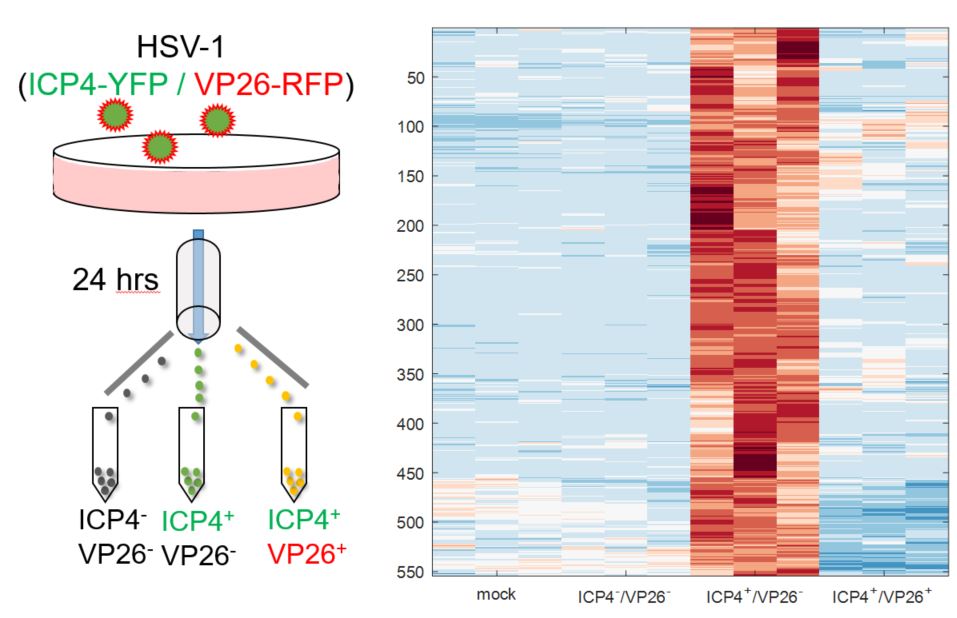HSV-1 infection of human skin and skin equivalent organoids
HSV-1 is a skin-tropic virus, carrying its life cycle in the highly structured environment of the skin epidermis. Currently, most of our understanding of HSV-1 biology comes from studying infection of cell-lines in 2D cultures.
Our lab is now studying the molecular events that shape HSV-1 infection using both human skin equivalent organoids and ex-vivo human skin.
Molecular characterization of abortive infections
Our lab is studying host programs that are able to abort infection, even after viral gene expression has begun. Using a “time-stamp” viral strain carrying two fluoresent reportes (ICP4-YFP and VP26-RFP, an immediate-early and late genes, respectively), we’ve identifed three subpopulations of infected-cells: non-infected (ICP4–/VP26–), abortive infections (ICP4+/VP26–) and productive infections (ICP4+/VP26+). RNA-sequencing has identified ~500 host genes that are specifically up-regulated in abortively-infected cells. A major focus of the lab is the functional charecterization of this novel host response.
What makes a cell predisposed to become a super producer?
Most infected cells produce few progeny, but a small subset of cells produce thousands. Currently, the cellular events that shape a cell’s fate as a super producer are completely uncharacterized, due to technical limitations in characterizing and studying these cells. Our lab is working to develop computer-vision tools to connect the image of a cell before infection with the number of progeny it produces, which will allow us to identify the cellular states that support super production.
The function of Interferon stimulated genes in HSV-1 infection
Interferons are cytokines with robust antiviral activity against many viruses, including HSV-1. When exposed to interferon, cells up-regulate hundreds of genes, only a handful of which is active against any given virus.
Our lab studies which of these Interferon Stimulated Genes (ISGs) is important for mediating the antiviral activity of interferon against HSV-1 in human keratinocytes and skin equivalent organoids.

